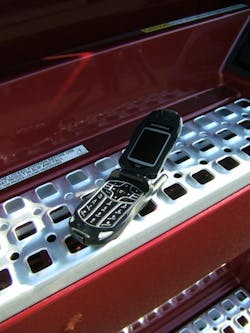That’s one of the conclusions of this study, which was sponsored by the Southwest Region University Transportation Center (SWTUC) and conducted by the Texas A&M Transportation Institute (TTI); a member of the Texas A&M University System.
Based on the performance of 43 participants driving an actual vehicle on a closed course, SWTUC’s researchers discovered that while texting drivers thought they were being more careful when using the voice-to-text method, it turned out that technology didn’t offer “any real safety advantage” over manual texting, noted Christine Yager, a TTI associate transportation researcher who managed the study.
“Drivers felt less safe when they were texting, but felt safer when using a voice-to-text application than when texting manually – even though driving performance suffered equally with both methods,” she explained. “Understanding the distracted driving issue is an evolving process, and this study is but one step in that process. We believe it’s a useful step, and we’re eager to see what other studies may find.”
Other major findings from TTI’s study included:
- Driver response times were significantly delayed no matter which texting method was used.
- In each case, drivers took about twice as long to react as they did when they weren’t texting.
- With slower reaction times, drivers are less able to take action in response to sudden roadway hazards, such as a swerving vehicle or a pedestrian in the street.
- The amount of time that drivers spent looking at the roadway ahead was significantly less when they were texting, no matter which texting method was used.
- For most tasks, manual texting required slightly less time than the voice-to-text method, but driver performance was roughly the same with both.
TTI noted that this particulsr study involved drivers first navigating a roadway course without any use of cell phones, followed by three more circuits while performing a series of “texting” exercises as they operated their vehicle – once using each of two voice-to-text applications (Siri for the iPhone and Vlingo for Android) and once texting manually.
TTI said its researchers then measured the time it took each driver to complete the tasks, and also noted how long it took for the drivers to respond to a light which came on at random intervals during the driving exercise.
Yager also pointed out that TTI is currently conducted another study examining the motivations and attitudes of distracted drivers, with the results from the focus groups and a 3,000-driver survey expected in late summer that will include a look at which demographic groups are most affected by the distracted driving issue.
Needless to say, the results of TTI’s work means many drivers – truckers included – may need to re-think their behind-the-wheel communication methods.

